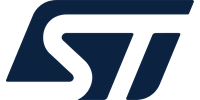High Voltage Offline Converters
Welcome to STMicroelectronics High Voltage Offline Converters product training module. This presentation will provide an overview of power topologies for sub-100 W power supplies powered by the AC line. It will highlight the feature sets provided by the VIPer Plus and L6566 power ICs for such power supplies, and discuss how the ST e-design suite tool can assist in such designs.
PTM Published on: 2015-10-16







